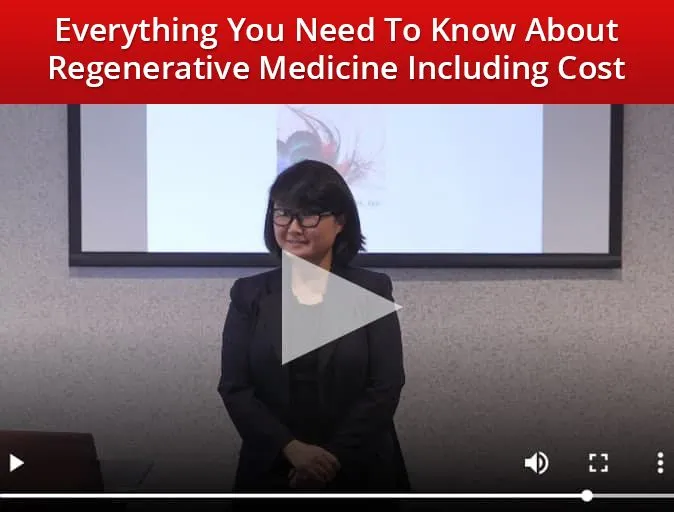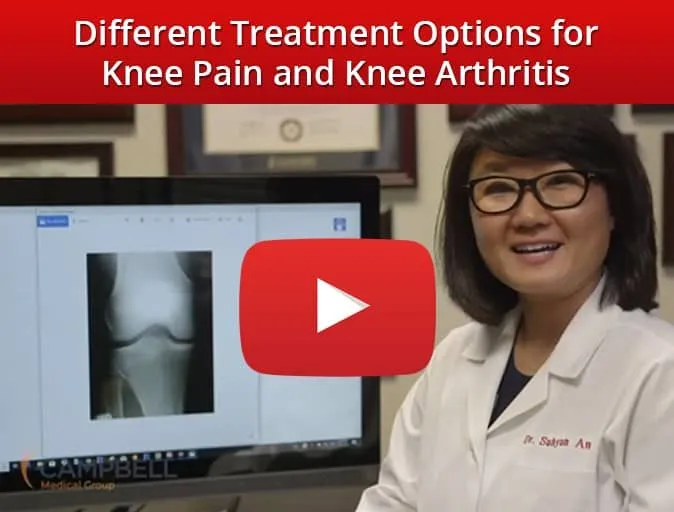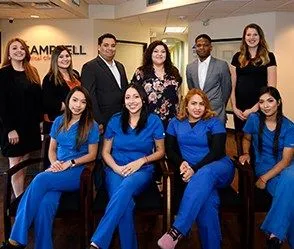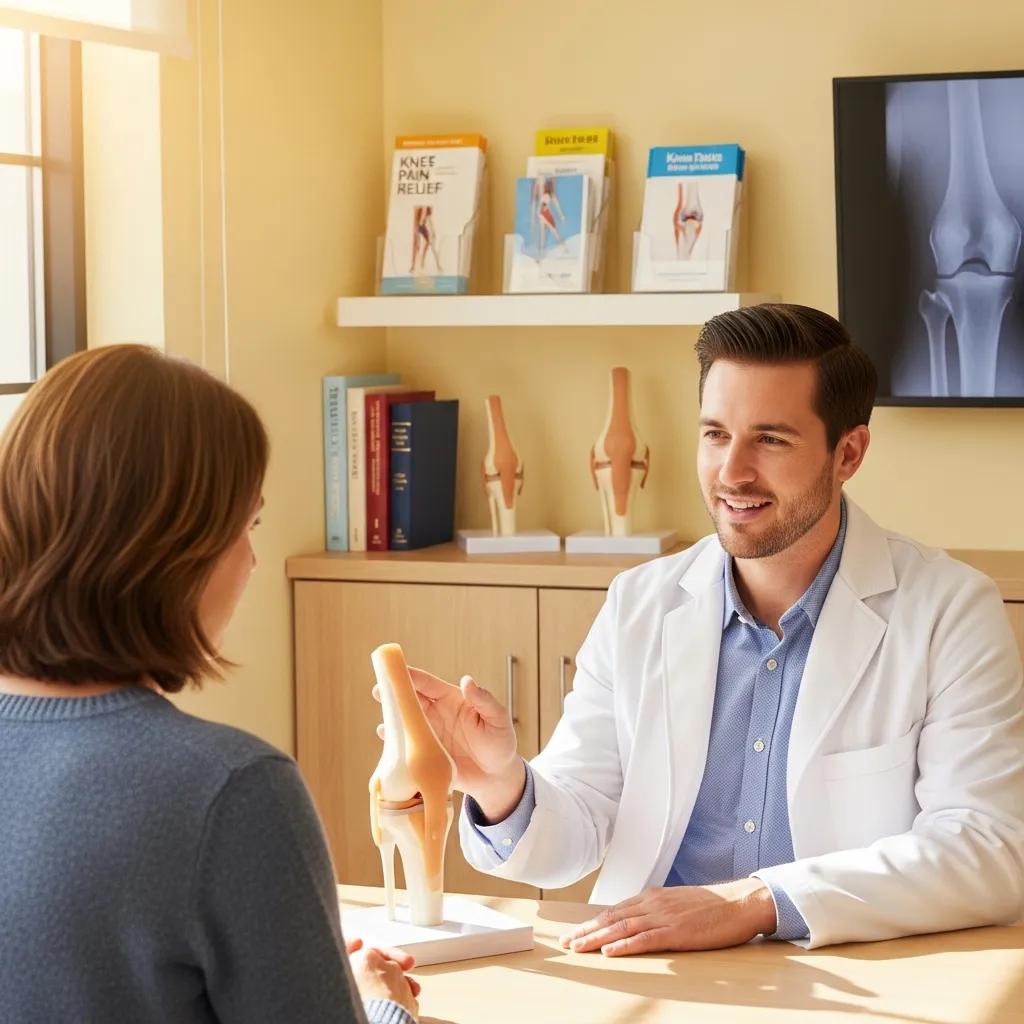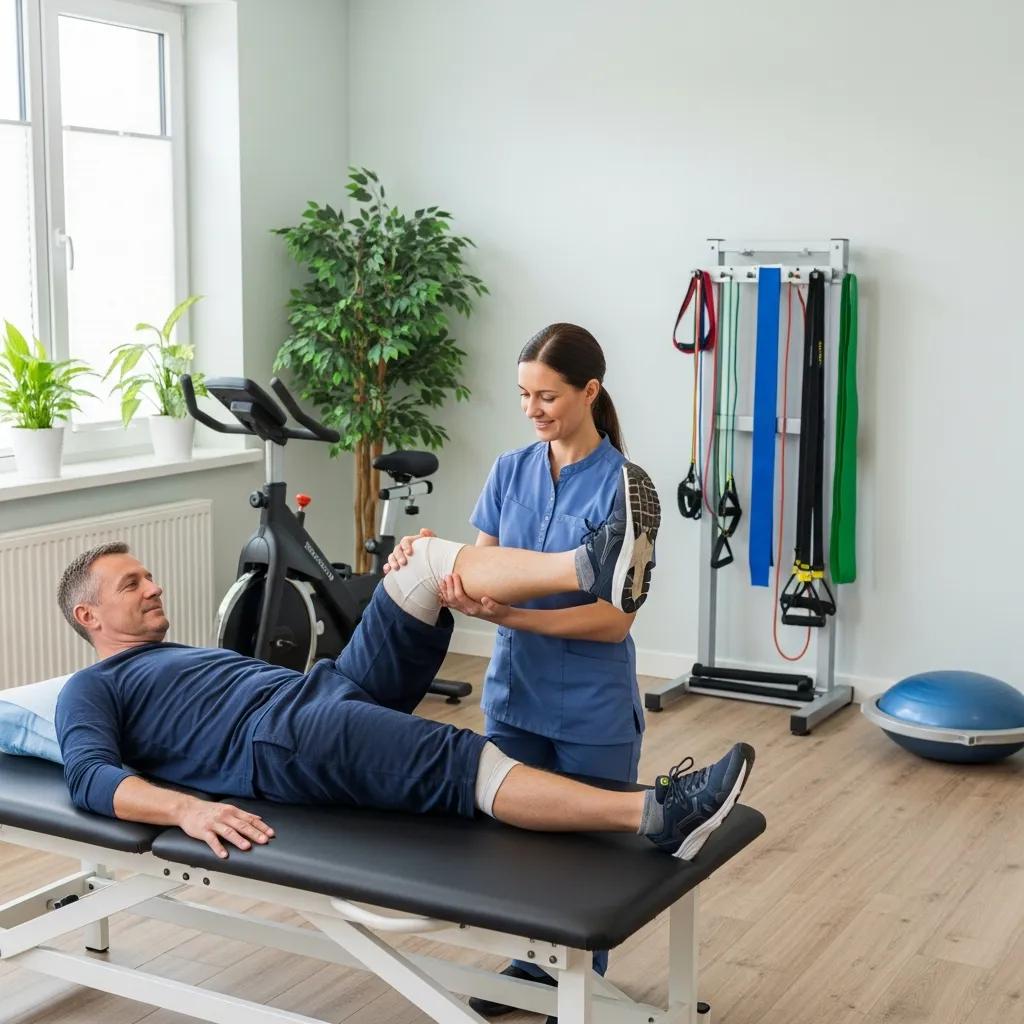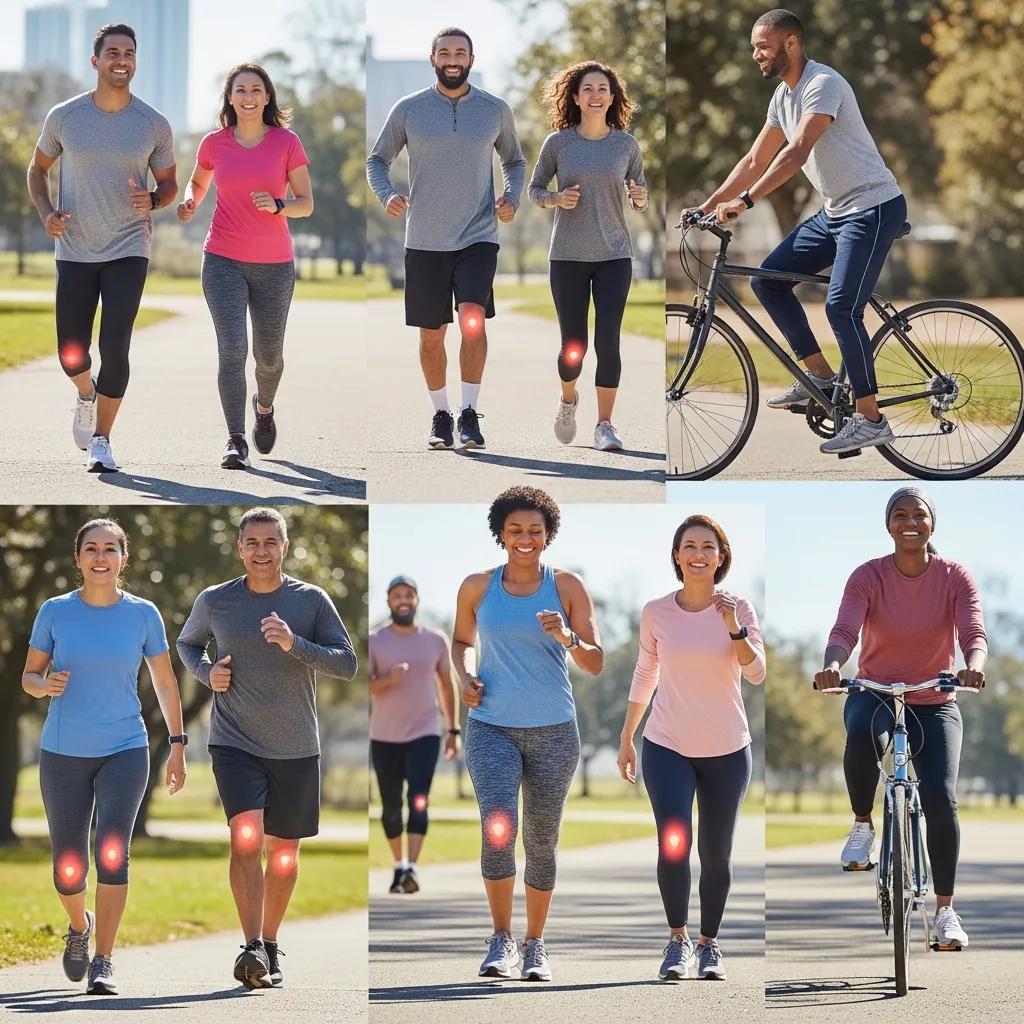Comprehensive Non-Surgical Orthopaedic Pain Management in Houston
Are you evaluating whether your Houston clinic provides truly comprehensive non-surgical orthopaedic care that addresses the full spectrum of acute and chronic pain conditions? Understanding what comprehensive pain management care involves can transform patient outcomes by integrating conservative therapies, advanced regenerative techniques, and patient-focused coordination. This article defines the essential components of a holistic pain management program, explains non-surgical strategies for joint, back, and nerve pain, highlights cutting-edge trends in orthopaedics, and offers criteria for selecting a Houston clinic that ensures ongoing support from diagnosis through recovery. By exploring how evidence-based modalities and multidisciplinary collaboration work together, you will learn how to confirm that your clinic or healthcare partner delivers the broad expertise and tailored plans essential for lasting relief and functional improvement.
What Defines Comprehensive Pain Management Care in Houston?
Comprehensive pain management care in Houston integrates multiple non-surgical orthopaedic disciplines by combining physical therapy, interventional procedures, and lifestyle optimization to reduce discomfort and enhance mobility. This model treats pain as a complex condition requiring coordinated evaluation, individualized treatment planning, and ongoing support rather than isolated interventions. By addressing musculoskeletal alignment, inflammation control, and psychosocial factors, a comprehensive approach optimizes recovery while minimizing reliance on medications or invasive surgery.
A fully integrated clinic ensures that specialists in orthopaedic rehabilitation, regenerative medicine, and pain psychology collaborate under one care plan. Diagnostic imaging, functional assessments, and patient-reported outcomes guide iterative adjustments in therapy. Embedding educational sessions on ergonomics and nutrition further empowers individuals to maintain gains and prevent recurrence. This synergy of assessment, intervention, and self-management forms the hallmark of comprehensive non-surgical orthopaedic care in Houston.
Which Conditions Are Treated at a Houston Pain Management Clinic?
A multidisciplinary pain management clinic typically addresses a broad array of musculoskeletal and neurologic conditions, including:
- Joint pain from osteoarthritis, bursitis, or tendonitis
- Chronic and acute back pain such as sciatica or herniated discs
- Neuropathy related to diabetes or nerve compression
- Sports injuries involving ligaments, muscles, or cartilage
- Repetitive-strain disorders affecting wrists, elbows, or shoulders
These conditions often overlap in presentation, making an integrated diagnostic and therapeutic strategy essential for durable relief. Recognizing the full scope of treatable issues paves the way for creating unified care pathways.
How Does Non-Surgical Orthopaedic Care Benefit Chronic Pain Patients?
Non-surgical orthopaedic care focuses on restoring tissue function and reducing pain through methods that carry lower risk than surgery. Patients benefit from targeted injections, guided physical therapy, and regenerative treatments that stimulate natural healing processes. Avoiding operative trauma preserves joint structures and accelerates daily activity resumption, while customized rehabilitation programs build strength and flexibility to support long-term outcomes.
By leveraging conservative measures first, clinicians can often delay or eliminate the need for joint replacement or spinal surgery. This patient-focused strategy also reduces recovery time, minimizes opioid exposure, and enhances quality of life through gradual, sustainable improvement.
What Makes Campbell Health Center’s Approach Patient-Centered?
Campbell Health Center emphasizes a patient-centered philosophy by starting each care pathway with an in-depth consultation to understand individual goals, lifestyle demands, and health history. This clinic provides clear education on the rationale behind each intervention and involves patients in shared decision-making for selecting therapies. Regular progress reviews ensure adjustments to treatment plans based on real-time feedback and functional metrics.
The center’s commitment to transparent communication and empathetic support fosters trust and adherence, reinforcing positive behavioral signals such as active participation and confidence in recovery. This personalized coordination across specialties cements its reputation as a trusted partner in non-surgical orthopaedic care.
How Is Joint Pain Relief Provided Without Surgery in Houston?
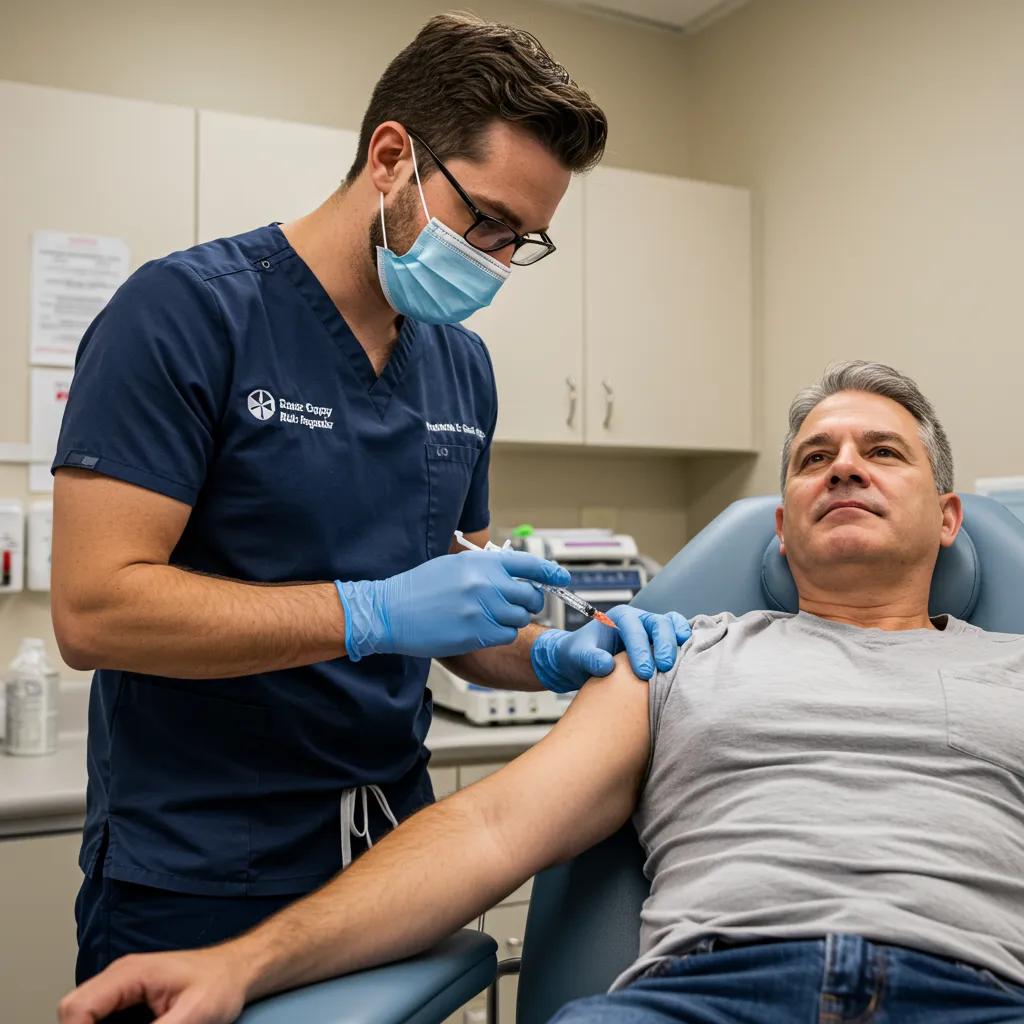
Non-surgical joint pain relief in Houston combines diagnostic precision and targeted therapies to alleviate discomfort and restore function without invasive procedures. Through imaging-guided injections, advanced regenerative medicine, and specialized rehabilitation, patients experience reduced inflammation, improved cartilage health, and enhanced joint stability. This integrated approach delivers measurable improvements in pain scores and activity levels while avoiding surgical risks.
A structured pathway begins with a thorough musculoskeletal evaluation to identify contributing factors such as alignment issues, soft-tissue degeneration, or inflammatory arthropathy. Based on findings, clinicians may recommend a combination of treatments designed to complement one another and address both symptoms and underlying mechanisms.
| Treatment Modality | Mechanism | Benefit |
|---|---|---|
| Platelet-Rich Plasma (PRP) | Growth factor release | Stimulates cartilage repair and reduces pain |
| Physical Therapy | Controlled loading and stretching | Improves strength, flexibility, and joint stability |
| Hyaluronic Acid Injections | Viscosupplementation | Enhances lubrication and shock absorption |
| Extracorporeal Shockwave | Microtrauma-induced healing | Promotes neovascularization and tissue regeneration |
This array of non-surgical options allows precise customization according to joint type and severity, ensuring each patient receives the optimal combination for lasting relief.
What Are Common Causes and Symptoms of Joint Pain?
Joint pain often arises from wear-and-tear conditions such as osteoarthritis, autoimmune inflammation in rheumatoid arthritis, or soft-tissue injuries like tendonitis. Symptoms typically include stiffness, swelling, crepitus (joint grinding), and reduced range of motion. Pain may worsen with activity or after prolonged rest, signaling the need for professional assessment to prevent progression and maintain quality of life.
Recognition of early warning signs and contributing biomechanical factors is critical to designing an effective non-surgical relief plan that addresses both discomfort and functional limitations.
Which Non-Surgical Treatments Are Available for Joint Pain Relief?
A comprehensive Houston clinic offers a spectrum of non-surgical joint pain treatments:
- Guided Injection Therapies – Steroids, hyaluronic acid, or PRP delivered under imaging guidance
- Regenerative Medicine – Stem cell procedures to harness natural repair mechanisms
- Manual and Exercise Therapy – Hands-on mobilization combined with tailored strengthening programs
- Orthotic Support and Bracing – Customized devices to correct alignment and unload damaged joint areas
Delivering these interventions as part of an integrated care plan ensures that each modality reinforces the others, maximizing tissue healing and functional restoration.
How Does Regenerative Medicine Support Joint Healing?
Regenerative medicine leverages the body’s own healing pathways by concentrating growth factors and progenitor cells to injured areas. In Houston, PRP injections and stem cell therapies represent cutting-edge modalities that accelerate cartilage regeneration, reduce inflammatory cytokines, and promote matrix synthesis. Patients often observe gradual but sustained improvements in pain and motion over several weeks, reflecting the underlying biological repair processes at work.
Embedding regenerative approaches within a broader rehabilitation and lifestyle plan amplifies their effectiveness, fostering conditions conducive to long-term joint health.
What Patient Success Stories Demonstrate Effective Joint Pain Relief?
Patients frequently report significant reduction in pain scores and resumed participation in daily activities after combined non-surgical treatments. For example, individuals with knee osteoarthritis achieve improved walking endurance through a phased protocol of PRP injections, targeted exercise regimens, and supportive bracing. These success stories underscore the power of a comprehensive, coordinated strategy in transforming joint health without surgical intervention.
Such outcomes build confidence in the non-surgical model and illustrate the potential for meaningful, lasting relief through conservative orthopaedic care.
What Non-Surgical Solutions Are Effective for Back Pain Treatment in Houston?
Non-surgical back pain treatment in Houston centers on a balance of targeted interventions and functional rehabilitation to address both acute flare-ups and chronic conditions. Techniques such as spinal manipulation, epidural injections, and core stabilization programs work in synergy to alleviate nerve compression, reduce muscular guarding, and restore spinal alignment. By minimizing biomechanical stress and optimizing movement patterns, patients achieve pain relief and gradual return to normal activity without surgery.
An initial diagnostic assessment pinpoints the source of pain—whether discogenic, arthritic, or muscular—guiding selection of therapies that combine immediate symptom control with long-term biomechanical correction.
| Therapy | Target Area | Outcome |
|---|---|---|
| Epidural Steroid Injection | Nerve root inflammation | Diminishes radicular pain and numbness |
| Core Strengthening Exercises | Lumbar stabilizers | Enhances support and reduces recurrence risk |
| Spinal Decompression Therapy | Disc rehydration | Relieves pressure on spinal discs |
| Postural Education | Ergonomic alignment | Prevents compensatory movements and strain |
By layering these non-surgical solutions within a cohesive plan, patients benefit from both rapid relief and sustainable improvements in spinal function.
What Causes Chronic and Acute Back Pain?
Back pain may result from acute injury such as muscle strain or chronic degeneration including herniated discs and facet joint osteoarthritis. Inflammatory disorders and nerve impingement can further complicate the presentation. Symptoms range from localized aching to radiating leg pain, often accompanied by stiffness and limited flexibility. Identifying the precise etiology through imaging and functional tests allows targeted therapy that addresses both immediate discomfort and contributing biomechanical factors.
How Do Physical Therapy and Minimally Invasive Procedures Help Back Pain?
Physical therapy employs manual techniques, stretching, and progressive strengthening exercises to restore mobility and unload stressed structures. Minimally invasive procedures—such as facet joint injections or nerve ablations—deliver localized relief by interrupting pain signals or reducing inflammation. Combining these methods accelerates recovery, enabling patients to engage in rehabilitation activities sooner and build core stability that prevents recurrence.
Can Regenerative Medicine Improve Back Pain Outcomes?
Regenerative injections, including PRP and bone marrow concentrate, enhance disc and ligament healing by introducing growth factors that support tissue repair. Early adopters in Houston report reduced back pain and improved posture following regenerative protocols combined with therapeutic exercise. These biologic treatments represent an evolving frontier in non-surgical spinal care, offering hope for deeper, longer-lasting benefits.
What Are the Benefits of Choosing Non-Surgical Back Pain Care?
Opting for non-surgical back pain care reduces risk of complications, shortens recovery times, and preserves natural spinal structures. Patients maintain greater autonomy through guided self-management techniques and avoid the downtime associated with open procedures. This conservative strategy fosters long-term resilience by addressing both symptom relief and underlying functional deficits.
How Can Neuropathy Be Treated Without Surgery in Houston?
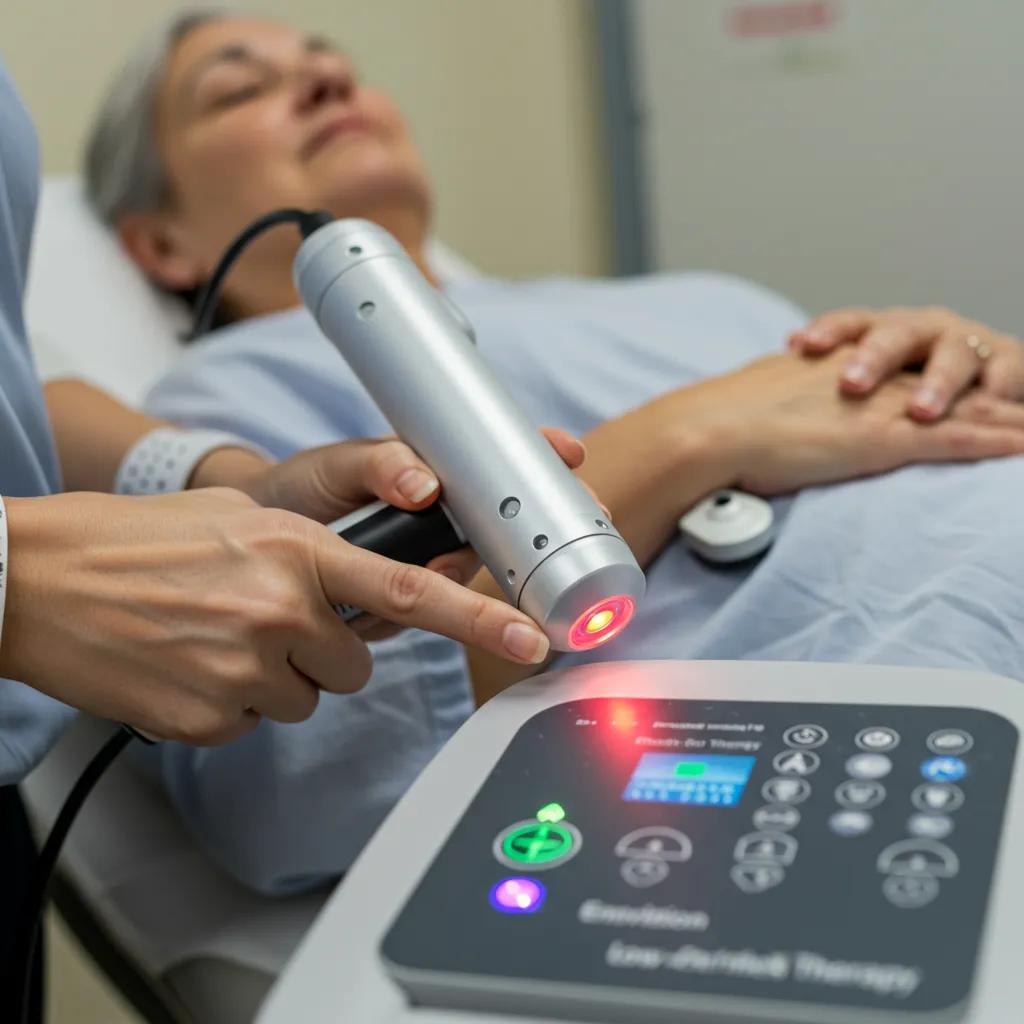
Managing neuropathy without surgery in Houston involves a combination of neuroprotective therapies, symptom-modulating injections, and supportive rehabilitation to restore nerve health and mitigate discomfort. Techniques such as vitamin-rich infusions, targeted low-level laser therapy, and custom nerve gliding exercises reduce pain, improve conduction, and enhance daily function. Addressing systemic factors like blood sugar control and microvascular circulation further amplifies regenerative outcomes.
Personalized assessment of neuropathy etiology—be it diabetic, compressive, or idiopathic—drives selection of complementary modalities that work together to improve nerve resilience and signal transmission.
What Are the Symptoms and Causes of Neuropathy?
Neuropathy manifests as tingling, burning, numbness, or weakness along nerve distributions. Causes range from metabolic disorders like diabetes to mechanical compression in carpal or tarsal tunnels. Early detection of sensory changes and identification of contributing factors are essential for preventing progression and planning effective non-surgical interventions.
Which Non-Surgical Treatments Are Offered for Neuropathy?
Houston clinics provide a suite of non-surgical neuropathy treatments:
- Nutritional and Neurotrophic Infusions to support nerve regeneration
- Low-Level Laser Therapy for anti-inflammatory and neuroprotective effects
- Nerve Gliding and Desensitization Exercises to improve conduction and reduce hypersensitivity
- Ultrasound-Guided Nerve Blocks to interrupt pain pathways temporarily
Combining these approaches within a structured program maximizes functional gains and symptom control.
How Does Campbell Health Center Personalize Neuropathy Care?
Campbell Health Center develops individualized neuropathy protocols by integrating metabolic optimization, targeted regenerative injections, and customized home exercise plans. Their team monitors nerve conduction improvements and patient-reported outcomes to fine-tune therapies over time. This responsive model ensures that each intervention aligns with evolving nerve health metrics and patient goals.
What Are the Latest Trends in Non-Surgical Pain Management and Orthopaedics?
Non-surgical pain management trends in 2025 emphasize regenerative medicine, non-opioid analgesics, and integrated multidisciplinary care models. Clinics in Houston increasingly adopt PRP and stem cell therapies to harness biologic repair mechanisms, while innovations in neuromodulation devices offer targeted nerve stimulation without surgery. Patient satisfaction correlates strongly with programs that combine medical interventions, rehabilitative services, and educational support under a unified care plan.
This shift toward comprehensive, conservative strategies reflects growing demand for solutions that minimize risk and foster durable improvements in function and quality of life.
How Is Regenerative Medicine Shaping Pain Treatment in Houston?
Regenerative medicine leverages autologous biologics—platelet concentrates and mesenchymal cells—to activate intrinsic healing pathways. In Houston, practitioners refine injection protocols and adjunctive rehabilitation to maximize tissue restoration. As more clinical data emerge, adoption of these therapies grows among populations seeking to avoid surgery and maintain active lifestyles.
Why Is There Growing Demand for Non-Opioid Pain Solutions?
Concerns over opioid dependency and side effects drive patients and providers toward non-opioid analgesics, interventional therapies, and holistic pain programs. Emphasis on safety, reduced systemic impact, and functional rehabilitation aligns with broader healthcare trends prioritizing responsible pain care and patient empowerment.
How Does Multidisciplinary Care Improve Patient Satisfaction?
Combining medical, physical, and behavioral health expertise in a coordinated plan enhances treatment adherence and outcomes. Patients benefit from seamless communication among specialists, clear goal setting, and consistent progress tracking. This collaborative framework fosters trust and engages individuals in active recovery, reinforcing positive behavioral signals that support long-term wellness.
How Do You Choose the Right Houston Clinic for Comprehensive Pain Care?
Selecting the ideal pain management clinic involves evaluating clinical expertise, treatment breadth, and patient experience. Key criteria include access to multiple non-surgical modalities, transparency in outcomes data, and evidence of positive patient feedback. A clinic should demonstrate proficiency in advanced orthopaedic techniques, regenerative therapies, and functional rehabilitation, backed by a structured care pathway from evaluation to maintenance.
What Should You Look for in a Pain Management Clinic?
Look for a clinic that offers:
- Comprehensive Diagnostic Services including imaging and functional assessments
- Integrated Treatment Modalities spanning injections, therapy, and regenerative options
- Patient Education and Support through workshops and digital resources
- Outcome Tracking to demonstrate efficacy and guide plan adjustments
Evaluating these features ensures selection of a partner committed to holistic, non-surgical orthopaedic care.
How Does Campbell Health Center Establish Credibility and Trust?
Campbell Health Center builds credibility through documented patient outcomes, transparent treatment protocols, and a multidisciplinary team approach. Regular reporting of pain-score improvements and functional milestones reinforces trust, while educational initiatives empower individuals to participate actively in their own recovery.
What Questions Should You Ask During a Pain Management Consultation?
Prepare to inquire about:
- The clinic’s success rates with non-surgical orthopaedic treatments
- How treatment plans adapt if initial modalities prove insufficient
- The role of regenerative medicine in your specific condition
- Options for ongoing support and self-management resources
These questions help clarify whether the clinic’s capabilities align with your goals and expectations.
What Should You Expect During a Consultation at a Houston Pain Management Clinic?
During a consultation, expect a comprehensive pain assessment that includes detailed history, physical examination, and review of prior imaging or tests. Clinicians will define your condition using objective metrics and patient-reported outcomes, then propose a non-surgical treatment plan tailored to your needs. This plan typically outlines a phased approach combining interventional procedures, rehabilitation exercises, and educational support. Follow-up protocols ensure monitoring of progress and timely adjustments, reinforcing a partnership focused on continuous improvement rather than episodic care.
How Is Your Pain Assessed and Diagnosed?
Assessment begins with standardized pain questionnaires, functional evaluations, and imaging review to pinpoint etiology and severity. Clinicians integrate biomechanical analysis and neurological testing to distinguish between joint, spinal, or nerve contributions to your discomfort.
What Non-Surgical Treatment Plans Are Customized for You?
Treatment plans blend evidence-based modalities such as targeted injections, regenerative therapies, physical therapy, and lifestyle modification. Each component is scheduled and monitored against functional benchmarks to ensure incremental benefits and sustained progress.
How Is Ongoing Patient Care and Support Provided?
Ongoing care includes regular follow-up visits, progress tracking through validated scales, and access to educational materials for self-management. Clinics often provide digital tools for home exercise guidance and direct communication channels for questions between appointments.
Patients in Houston seeking alternatives to surgery can rely on integrated non-surgical orthopaedic care to deliver coordinated, evidence-based relief. By verifying that your clinic offers a full spectrum of diagnostic, therapeutic, and regenerative modalities—supported by patient education and outcome tracking—you ensure access to a truly comprehensive pain management program. Consistent monitoring and adaptive treatment plans foster durable improvements in function and quality of life without the risks of invasive procedures.
Frequently Asked Questions
What should I expect during my first visit to a Houston pain management clinic?
During your first visit, you can expect a thorough evaluation that includes a detailed medical history, physical examination, and possibly a review of any previous imaging or tests. The clinician will assess your pain levels and functional limitations using standardized questionnaires. Based on this assessment, they will discuss potential non-surgical treatment options tailored to your specific needs, ensuring you understand the rationale behind each recommendation.
How long does it typically take to see results from non-surgical treatments?
The timeline for seeing results from non-surgical treatments can vary significantly based on the individual and the specific condition being treated. Many patients begin to notice improvements within a few weeks, especially with therapies like physical rehabilitation or injections. However, for some conditions, it may take several months to achieve optimal results. Regular follow-ups will help track progress and adjust treatment plans as necessary.
Are there any risks associated with non-surgical pain management treatments?
While non-surgical treatments generally carry lower risks than surgical options, they are not without potential side effects. For instance, injections may cause temporary discomfort, swelling, or bruising at the injection site. Additionally, some patients may experience allergic reactions to certain substances used in treatments. It’s essential to discuss any concerns with your healthcare provider to understand the specific risks associated with your treatment plan.
How can I prepare for my consultation at a pain management clinic?
To prepare for your consultation, gather any relevant medical records, imaging studies, and a list of medications you are currently taking. It may also be helpful to keep a pain diary leading up to your appointment, noting the intensity, frequency, and triggers of your pain. This information will assist the clinician in understanding your condition better and developing a tailored treatment plan.
What lifestyle changes can support my non-surgical pain management plan?
Incorporating lifestyle changes can significantly enhance the effectiveness of your non-surgical pain management plan. Regular physical activity, a balanced diet, and maintaining a healthy weight can improve overall health and reduce strain on affected areas. Additionally, practices such as stress management techniques, adequate sleep, and ergonomic adjustments in your daily activities can further support your recovery and pain relief efforts.
How does insurance coverage typically work for non-surgical pain management treatments?
Insurance coverage for non-surgical pain management treatments varies by provider and specific plan. Many insurance companies cover a range of non-surgical interventions, including physical therapy, injections, and certain diagnostic procedures. It’s advisable to contact your insurance provider before your appointment to understand your coverage options, co-pays, and any pre-authorization requirements for specific treatments.
Can I combine non-surgical treatments with other therapies?
Yes, combining non-surgical treatments with other therapies is often encouraged to enhance overall effectiveness. For instance, integrating physical therapy with regenerative medicine or pain psychology can provide a more comprehensive approach to pain management. Always discuss your treatment preferences with your healthcare provider to ensure that all therapies are coordinated and tailored to your specific needs for optimal results.

